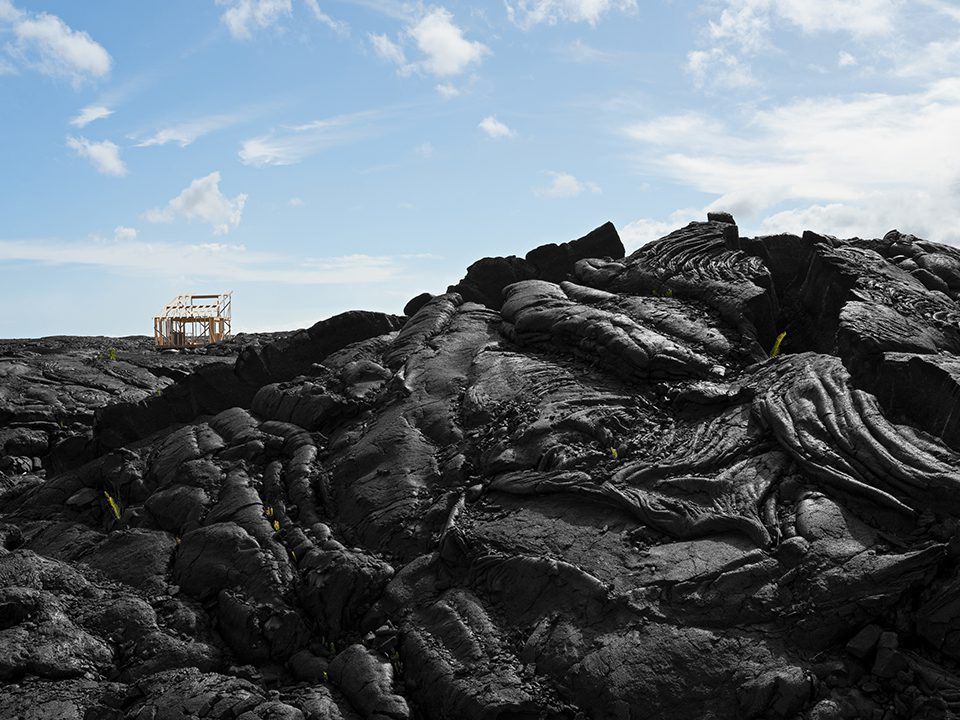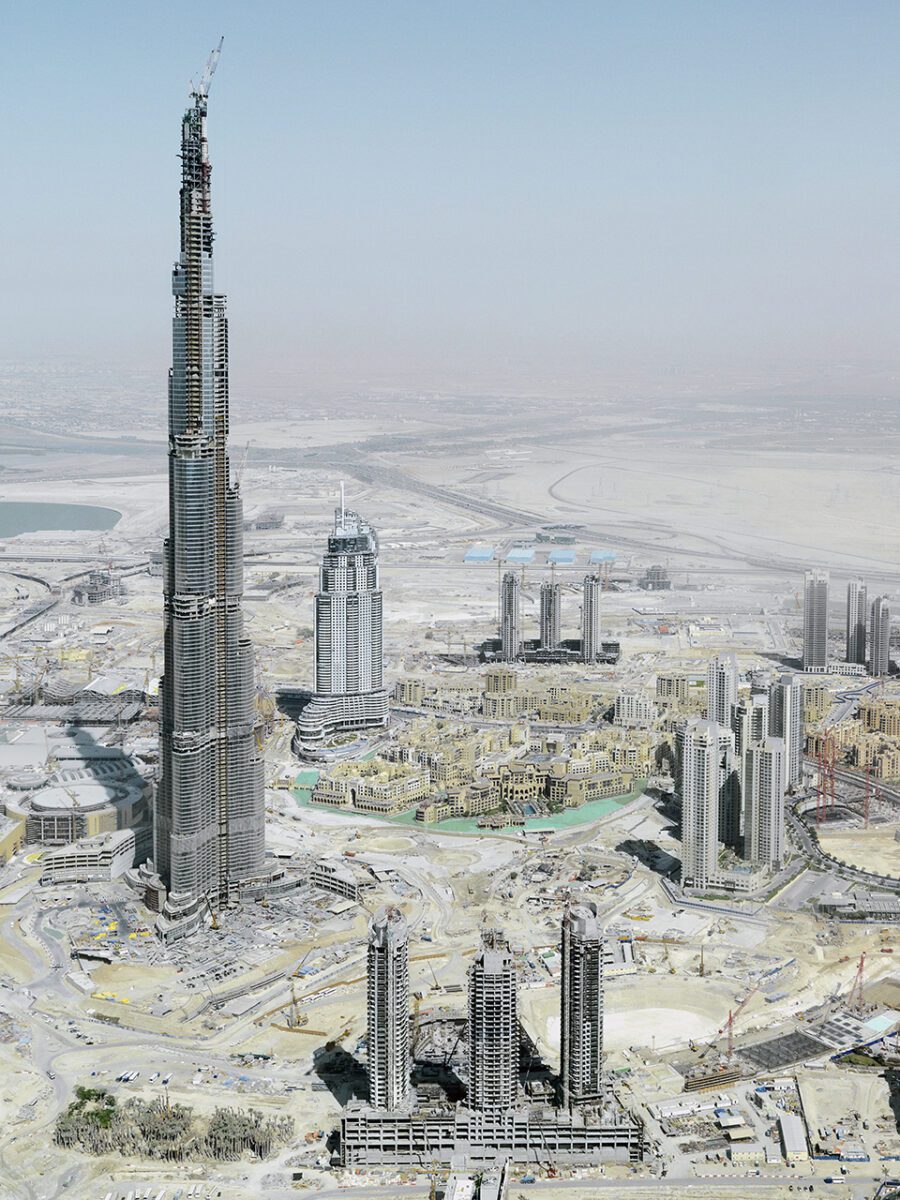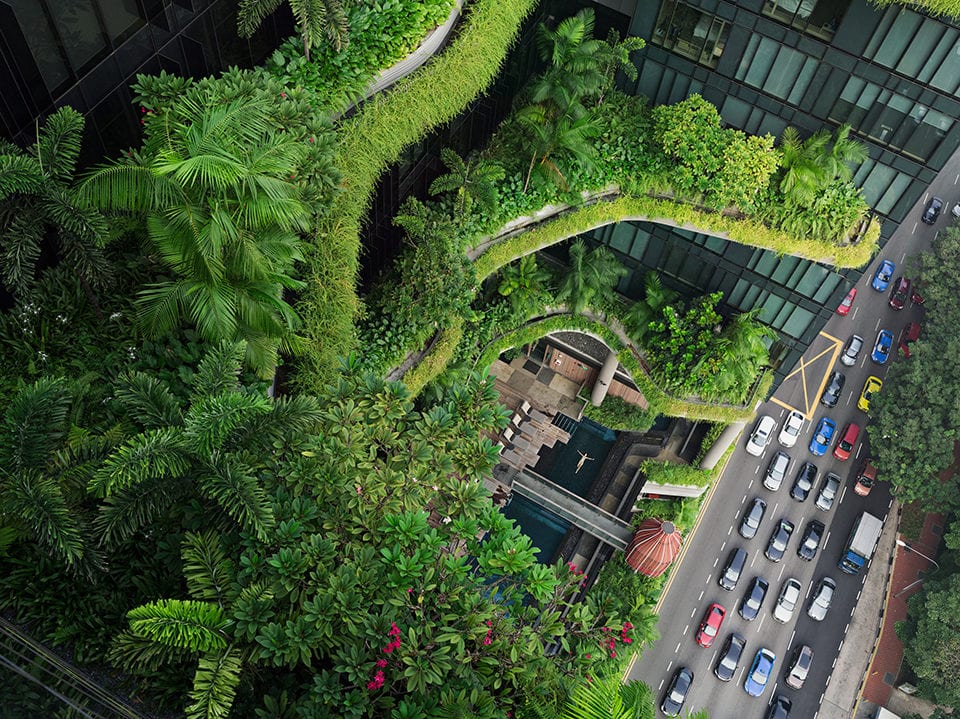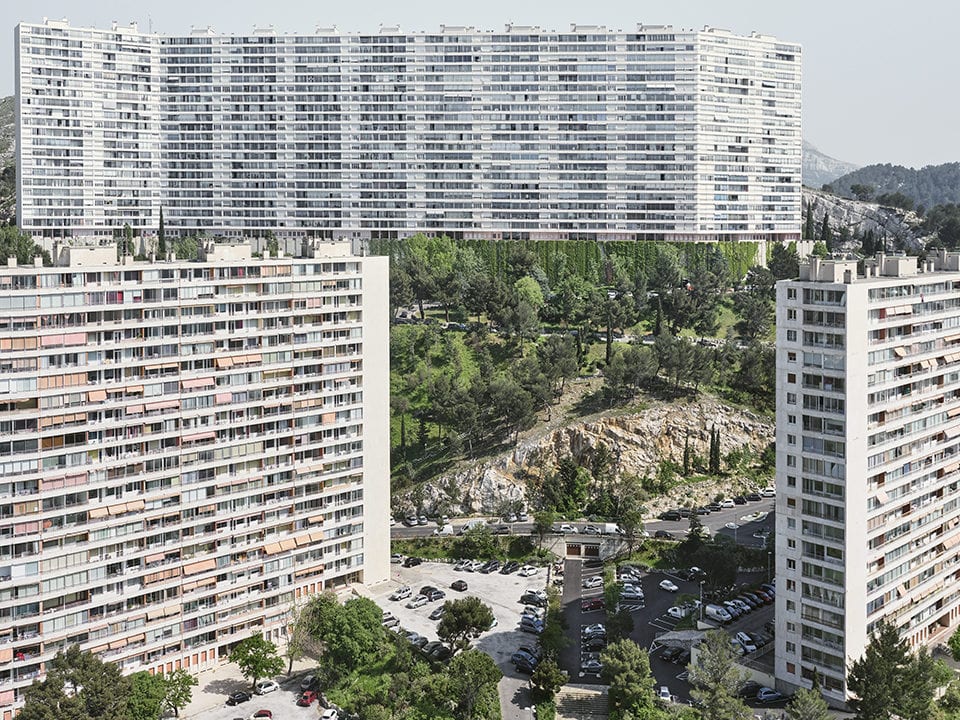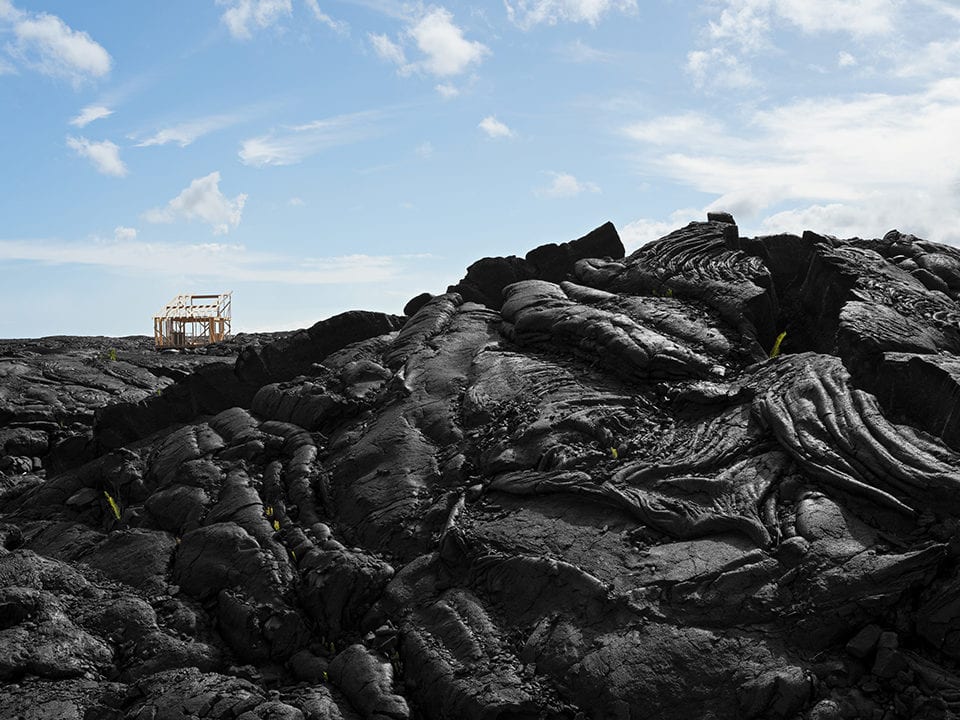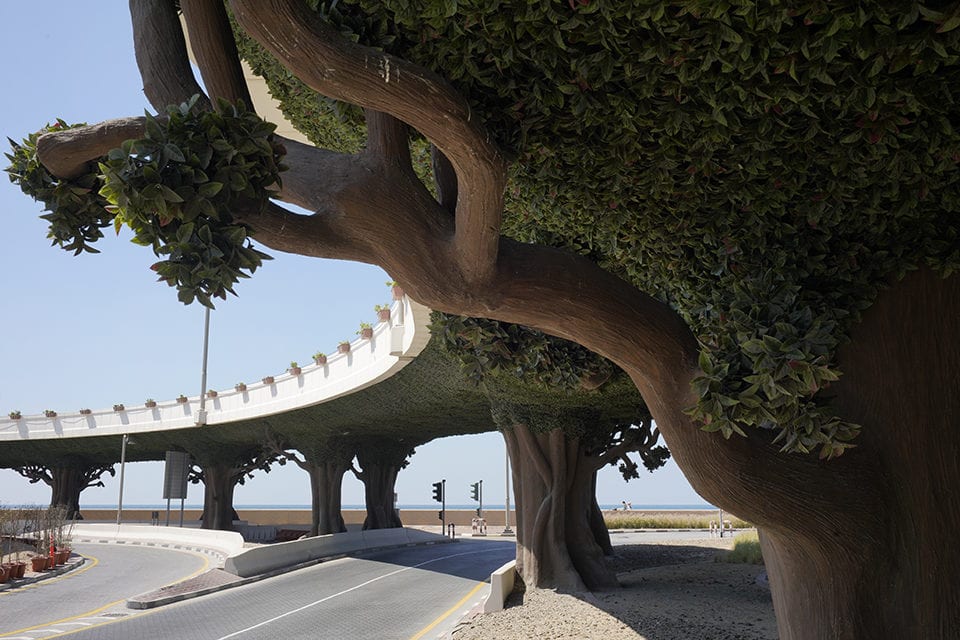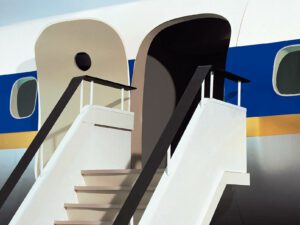The effects of ecological disaster loom large in the festival’s 50th edition, looking at the power of photography to alter perspectives and incite change.
Rencontres d’Arles was established 50 years ago by Jean-Maurice Rouqette, Lucien Clergue and Michel Tournier. The intention was to ensure that institutions recognised photography. Today, cameraphones are part of society; images are shared, celebrated and critiqued on a daily basis. As Hervé Schiavetti, Mayor of Arles, notes: “Clergue liked recalling the etymology of the word photography: ‘writing with light.’ Half a century is almost a third of photography’s story, from the spread of Nicéphore Niépce’s invention, to a daily habit for billions of people all over the world.”
What are images communicating about the present moment? In a self-reflexive move, Rencontres d’Arles began by taking on board some of the criticisms Director Sam Stourdzé received last year. In an open letter, a group of specialists urged for the inclusion of more women in the main programme. As such, the 2019 festival is giving solo shows to Marina Gadonneix, Libuše Jarcovjáková, Germaine Krull, Helen Levitt and Pixy Liao, as well as centring female practitioners in several group shows. The programme’s new thematic strands suggest that this was no token move. Four interconnected series – My Body Is a Weapon, On the Edge, Living and Building the Image – take on questions of equality, responsibility and power. They remind us that any social or cultural developments depend upon the planet.
Indeed, ecological destruction is at the forefront of all discussions – whether in the artistic landscape or the news. In May 2019, the UN published a report revealing that 1 million species are at risk of extinction. As Jonathan Watts, Global Environmental Editor, summates for The Guardian: “The biomass of wild mammals has fallen by 82% and natural ecosystems have lost about half their area – all largely as a result of human actions, said the [UN’s] study, compiled over three years by more than 450 scientists and diplomats. ‘The health of the ecosystems on which we and other species depend is deteriorating more rapidly than ever. We are eroding the very foundations of economies worldwide.’”
On 1 July – two months after the report was published – Rencontres d’Arles opens its doors for the 50th edition. Central to the programme are exhibitions about the harrowing geopolitical situation. This starts with Mario Del Curto’s (b. 1955) Vegetal Humanity – part of the Living strand – tracking 10 years of worldwide travel. The collection invites viewers to explore gardens – literally and metaphorically – for inspiration. The Swiss photographer and filmmaker looks at the domestic spaces as slices of nature that are close and familiar.
Wild and tamed, natural and curated, frivolous and austere, the gardens reflect how humans fashion nature around their homes. We are driven to manage trees, hedges and flowers for aesthetic or practical reasons, yet when spaces are artificially cultivated, they lose much of their value. Del Curto, who began his career capturing worldwide riots in the 1970s and 1980s, brings a political perspective to these quasi-natural environments. The locations include city gardens, endangered apple orchards in Kazakhstan and an otherworldly Park of Monsters in the Italian town of Bomarzo. The images ask what would happen to our living spaces, cultural practices and relationships if nature started to disappear? What would happen to our public spaces? How would our idea of “home” begin to fade? Del Curto invites viewers to see the garden as a symbol of what’s happening to the planet on a larger scale.
Philippe Chancel (b. 1959) takes these questions from domestic to public spaces. For over two decades, the Paris-based photographer has bridged art, documentary and journalism, from mass military parades in North Korea to the territories of South Africa. His presentation at Arles moves from China to the USA, and Africa to Europe. Datazone reveals the traumatic ecology, chaotic de-industrialisation and toxic setbacks that result from 21st century expansion. The series is integral to Chancel’s career, asking audiences to consider the connections between seven seemingly disparate places: North Korea, the United Arab Emirates, Kabul, Port-au-Prince, Fukushima, Haiti and Nigeria. Revealing a gross-geographic narrative of exploitation, disaster and war, all locations are subject to decline. None – whether eastern or western, northern or southern – are left unaffected by the 20th and 21st century desires for expansion.
Chancel’s depiction of the Niger Delta – one of the zones – is a haunting visual reminder. Depicting iridescent oil-slicked waters, corrugated iron barrels and stunted trees, the works document one of the most polluted places on Earth. Ogoniland has seen oil spills for decades, devastating both the environment and the lives of its people. In July 2010, Julia Baird, Deputy Editor of Newsweek reported that between 9 million and 13 million barrels have been spilled in the Niger Delta since 1958. The testimonies of Ken Saro-Wiwa, the Ogoni eco-activist who brought the Niger Delta to international attention in the 1990s, backed up by Amnesty investigations, revealed gross negligence on the part of Shell and other multinational oil companies. Chancel’s sombre and hypnotic images jolt us into realising the permanence of the degradation of Ogoni lands and waters.
Even as conditions on planet Earth are reaching breaking point, we are also experiencing an era of unprecedented knowledge-sharing, mobility and collaboration. Greta Thunberg, the 16-year-old Swedish environmentalist, is one such example. On 23 April in the UK Houses of Parliament, she stated: “We should no longer only ask: ‘Have we got enough money to go through with this?’ but: ‘Have we got enough of the carbon budget to go through with this?’ That must become the centre of our new currency.” Chancel’s images visualise Thunberg’s words: depicting areas of development that are all equal in their reliance on the planet.
Similarly, On Earth: Image-Making, Technology and the Natural World – curated by Foam Amsterdam – brings together a new generation of artists. The works are powerful on their own, but when curated in one sequence, they provoke the viewer to think laterally across technological, socio-economic, spiritual and political dimensions. We are dependent on the Earth. Lucas Foglia’s (b. 1983) Human Nature, a series of interconnected stories, takes stock of where we are – what we want and what we need and the spaces in between. The series is set in different geographies – cities, forests, farms, deserts, ice fields, oceans and atop of lava flows – examining the necessity of “wild” places, even when those locations are manmade constructions. The upstate New York farm where Foglia spent his childhood was flooded in 2012 by Hurricane Sandy, prompting him to travel around the world, befriending and depicting people working towards a positive climate future. From the age-old technique of using ice to protect orange trees from cold winter temperatures, to a newly built rainforest in urban Singapore, Foglia’s series looks forwards: towards hope.
The show also includes Mishka Henner (b. 1976), who recently exhibited at Paris Photo and ArteFiera. Henner’s oeuvre includes screenshots of feedlots in Texas, which capture the ecological effects of the meat industry. (Meat and dairy production uses 83% of farmland and accounts for 58% of agricultural greenhouse gas emissions but only 18% of food calories as stated in Watts’ article for The Guardian.) Henner’s other works include digital images of hurricanes that made landfall between 2002 and 2017, printed on 12 inch vinyl picture discs. The use of satellite imagery from the likes of Google Earth reminds us that, in an era of information as capital, data and accountability will grow ever more important. His aerial shots of American military outposts (2010) are perhaps the most stark, asking who has sovereignty and surveillance over the Earth.
Zones of friction can be much closer to home than oceans or outposts. By 2030, the United Nations expects the number of megacities to rise from 29 to 41, with each having more than 10 million inhabitants. Indeed, German photographer Michael Wolf, who died 25 April 2019, rose to fame for his exploration of soaring high rises in Hong Kong – symbols of modern-day development. The diverse conditions of living in metropolitan spaces are often so co-dependent that the smallest shifts in one can have a major impact on another. Filmmaker Daphné Bengoa and photographer Leo Fabrizio’s debut show, Building on a Human Scale, looks at the work of French architect Fernand Pouillon (1912-1986). This presentation foregrounds the buildings in Algeria that Pouillon created – those with cultural integration in mind.
Fabrizio also documents how the design, function and use of Poullon’s emergency housing, universities and hotels facilitated living in harmony with the environment. Meanwhile, Daphné Bengoa’s contributions often focus on those who carry out their day-to-day lives in such places, zooming in on the individuals behind the as case studies for what’s possible from one human to the next. In 2 (2018), eight storeys of a social housing block extends the full length of the photo. The sand-coloured Brutalist façade is punctuated by the endearing signs of longtime habitation: satellite dishes, drying laundry, potted plants and balconies that have doubled up as storage spaces. The images depict an abundance of water, stone and flora, undermining the presumption that urban spaces either contain or do away with the elements. There can be synergy.
This is perhaps the most important edition of Rencontres d’Arles yet. Its eco-critical contributions harness the power of photography and demonstrate what festivals can be: a marketplace for ideas. As Festival Director Sam Stourdzé notes: “Talking about yesterday, today and tomorrow, tirelessly exploring photography, entering its zones of friction where artists reveal the unspeakable – Arles has gone all-out to offer an ambitious, electric programme.” The festival is leading these discussions, opening our eyes to the destruction of the planet at a turning point in history. It is using the lens as a way of looking backwards in order to look forwards. As Greta Thunberg exclaimed: “Sometimes we just simply have to find a way. I’m sure that the moment we start behaving as if we were in an emergency, we can avoid climate and ecological catastrophe. Humans are very adaptable: we can still fix this. But the opportunity to do so will not last for long. We must start today. We have no more excuses.”
Sarah Jilani
Rencontres d’Arles, 1 July – 22 September
www.rencontres-arles.com


